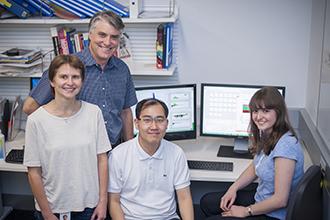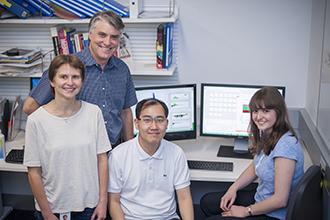
Credit: Walter and Eliza Hall Institute, Australia
Australian and Irish researchers have gained previously unachievable insights into how the size of our immune response is controlled, by developing new imaging and computational biology approaches to follow the behaviour of hundreds of cells. The research team discovered that in response to an infection, immune T cells develop in 'families' that are programmed to divide and die at different times after the infection is detected. This new understanding of how the immune response is controlled may underpin future improvements in vaccination or the treatment of autoimmune diseases.
During an immune response to an infection, immune T cells that recognise the invading microbe increase in number through cell division, and become armed to fight the infection. These 'armies' of T cells will stop expanding at a later point, and are cleared by the death of most of the cells, leaving only a few 'sentinels' called memory cells that provide long lasting immunity.
Dr Julia Marchingo, Professor Phil Hodgkin and colleagues at the Walter and Eliza Hall Institute worked with Professor Ken Duffy and Mr Giulio Prevedello from Maynooth University, Ireland, to develop a new way to track immune T cells as they divide and increase in number during an immune response. Their research was published today in the journal Nature Communications.
The new imaging and computational biology techniques revealed that 'families' of immune cells develop during an immune response, said Dr Marchingo, who is now a postdoctoral researcher at the University of Dundee, UK.
"Like families of people, these families of T cells vary in their characteristics," she said. "In the case of T cell families, the variability we detected was in how many times the cells would divide, and at what point in the immune response the cells would die. We were surprised by how consistent these were within each family of cells — as if the related cells had inherited a set of instructions specifying how they should behave," Dr Marchingo said.
Professor Duffy said the team's discovery of how immune cells respond to infection was driven by an entirely new approach to analysing the immune response. "In the past we had to track immune cells using microscopy, watching individual cells over days to see whether they were dividing or dying," he said. "This was incredibly time consuming and limited our ability to understand the intricacies of the immune response. By combining laboratory techniques with mathematical analyses we could follow hundreds of T cell families, and realised that their behaviour was influenced by which family they belonged to."
Professor Hodgkin said the research team's discovery was an important advance in understanding how immune responses are controlled. "As well as providing new insights into how we protect ourselves from infection, this research could explain some of the problems that contribute to autoimmune disorders, when the immune system mistakenly attacks the body, as well as underpinning advances in vaccination technology," he said.
###
The research was supported by the Australian National Health and Medical Research Council, Science Foundation Ireland, the European Union Seventh Framework Programme, and Australian Postgraduate Award, the Edith Moffat Scholarship, Cancer Council Victoria and the Victorian Government Operational Infrastructure Scheme.
The project was initiated when Dr Marchingo was a PhD student at the institute enrolled through The University of Melbourne's Department of Medical Biology.
Media Contact
Vanessa S Solomon
61-475-751-811
[email protected]
Deirdre Watters
Director of Marketing & Communications
Maynooth University, Ireland
T: 353-1-708-3363
M: 353-86-803-5274
[email protected]
############
Story Source: Materials provided by Scienmag




